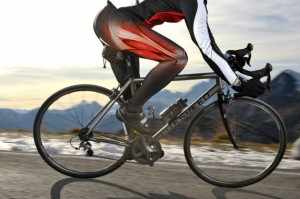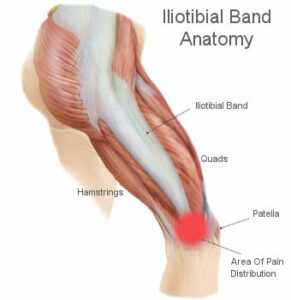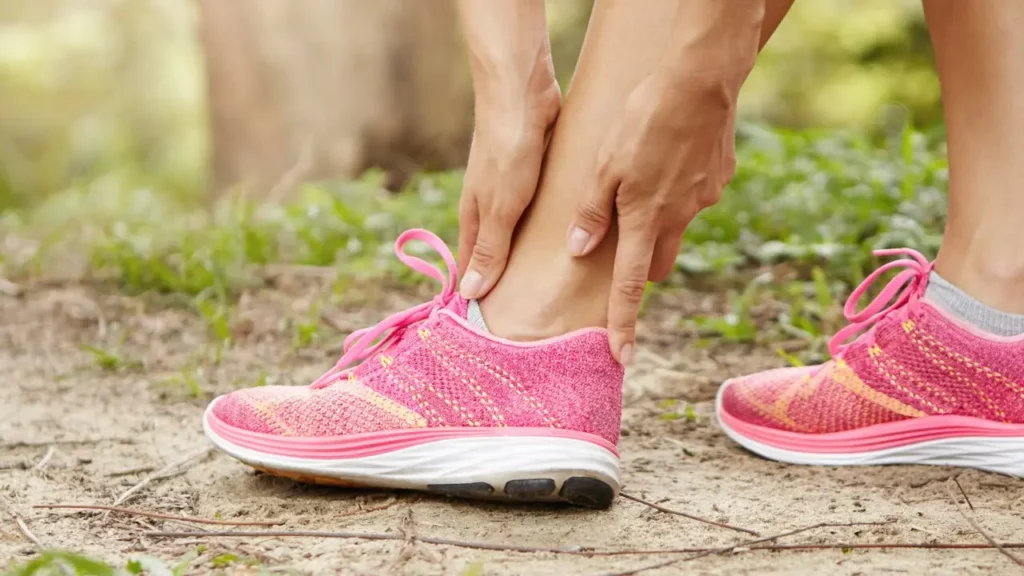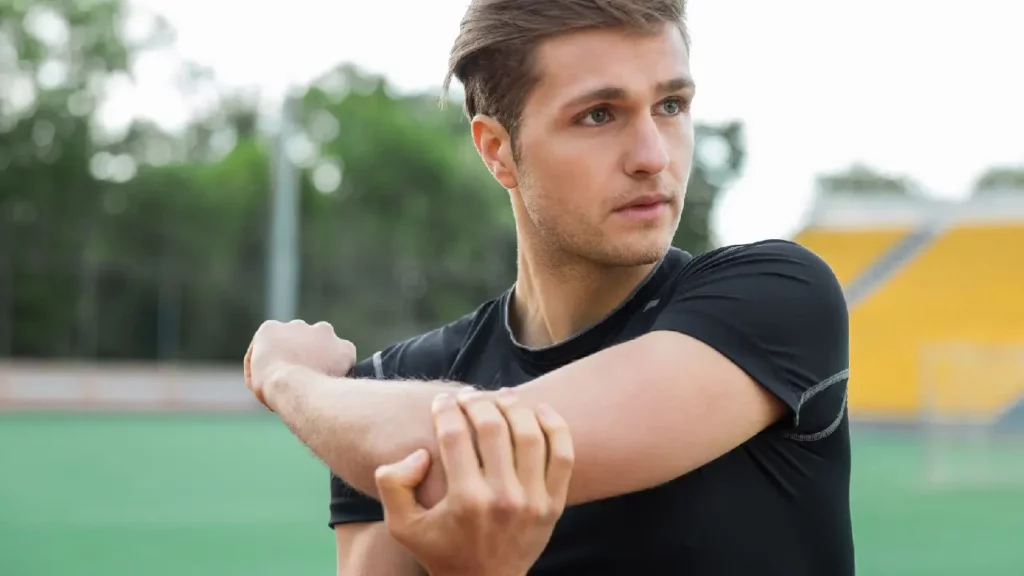Pain in “le” knee! I know… my grasp of languages is unrivalled in the physio world! Let me take a moment to explain my flurry into “la langue française” (plenty more of this to come…)
We are currently in the midst of the pinnacle of the professional cycling calendar… Le Tour de France! Suddenly, everybody digs out there retro Raleigh racers and thinks they’re Bradley Wiggins! So I thought to myself… what shall I discuss; the beauty of the hill stage scenery, the prestige of the yellow jersey, the advances in cycling technology? None of the above, because I’m a physio bore! I’m going to speak about knee pain, particularly pain on the outside of the knee, and more specifically Iliotibial Band Friction Syndrome (ITBFS)! A somewhat long-winded term, but sounds great when you get back from physio and tell all your friends!

“What is it?”, I hear you cry! The ITB is a long, thin band of fascia that runs down the outside of your thigh. At the top of your thigh it is attached to your Tensor Fascia Latae muscle, and Gluteus Maximus muscle. At the bottom it attaches to your tibia (shin bone) and femoral condyle (thigh bone).

Not only a cycling injury, ITBFS affects runners, skiers and pretty much any activity that requires repetitive bending of the knee at around 0-30 degrees. Generally speaking, ITBFS develops through overuse, rather than a specific injury.
With repetitive bending and straightening of the knee, the ITB can ‘flick’ across the bony protuberance on the outside of the knee (femoral condyle), causing irritation. This tends to cause pain and sometimes swelling on the outside of the knee, which gets worse with repetitive bending.
So what causes ITBFS… the unfeasibly tight Lycra cycling shorts?

Surprisingly, the answer is no! ITBFS is often caused by changes to training or activity, increased loading, poor muscle control around the hip and knee, or restriction in the soft tissue around the hip and knee. Now before you start thinking you have to give up saddle soreness and put your brightly coloured cycle wear on eBay… fear not! ITBFS is a relatively common condition, treated with a great deal of success through physiotherapy intervention. The major focus of treatment is to improve muscle control around the hip and reduce soft tissue restriction in the ITB. We treat ITBFS with strength and mobility exercise, soft tissue work, acupuncture and taping techniques, or a combination of these.
Below is a short demo video for one of the taping techniques, and a couple of the key exercises we use.
However, a thorough assessment is always recommended to rule out any other pathology, and to get to the bottom of the underlying cause.
So remember… look after your knees, do your rehab… et mobiliser régulièrement (Google it)! For more information on how physiotherapy can help with ITBFS or for a free telephone consultation, contact us here.



